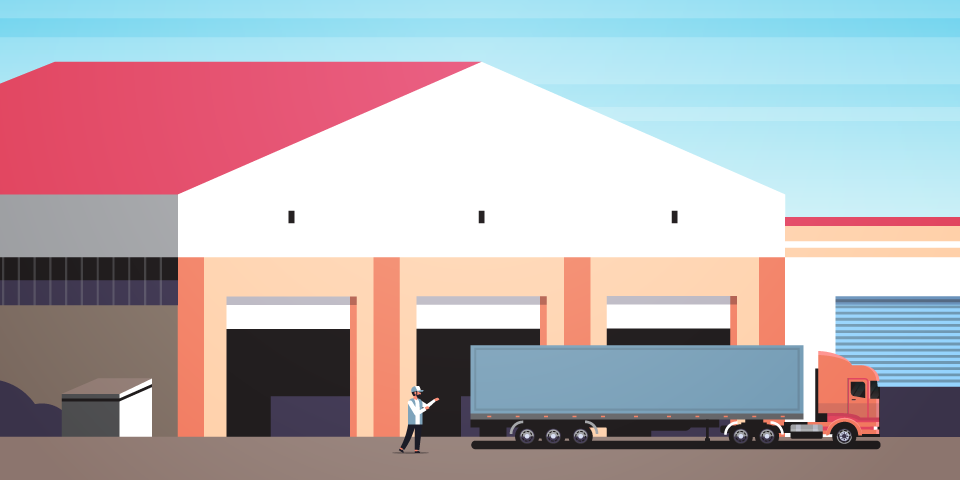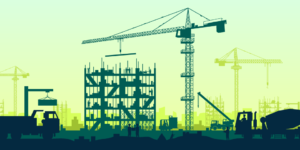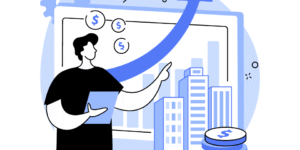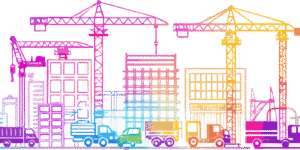In the last two decades, the industrial sector has become the darling of the commercial real estate market. Driven by a combination of insatiable consumer spending and a shift to online shopping, the industrial sector filled a tremendous need for warehouse space and last-mile fulfillment facilities, producing outsized returns for developers and operators. Demand was so strong in the heyday before the pandemic, industrial developers in high-demand markets, like the Inland Empire and New York/New Jersey, reported preleasing properties months before delivery. In the last five years, however, the voracious industrial demand has cooled. The construction pipeline has fallen to its lowest levels since 2015, contracting by nearly 30% since last year, and the vacancy rate has climbed to 7.3%.
Now, industrial developers are trying to navigate an even more uncertain road ahead. New trade policies and levies could have a negative short-term effect, driving down consumer spending, increasing inflation, and slowing economic growth. It could be a difficult time for industrial development, but tariffs could also drive domestic manufacturing demand, a potentially positive outcome for industrial developers. It may be a story of short-term pain for long-term gain.
Here is a closer look at the forecast for industrial development.
What is the New Trade Policy?
The current administration has implemented a widespread series of tariffs, or levies on imported goods, for nations around the world. The rate has fluctuated often this year as new trade agreements and negotiations emerge. Currently, there is a baseline 10% levy on all imported goods and a 20% tariff on goods from China. Additionally, there is a 25% tariff on automobiles and automobile parts, and a 25% tariff on lumber and steel, among levies on other goods. Many other tariff rates are currently on hold until July as countries renegotiate trade agreements.
The tariffs have an unknown impact on US economic performance, but overall, many economists expect GDP growth to slow significantly due to rising prices on goods and, subsequently, less consumer spending. According to research from Yale, the current tariffs could reduce real GDP by .7%, increase unemployment by .35% this year, and increase consumer prices by 1.7%. In the long run however, economists also predict an expansion of US manufacturing. While this could have a broad stroke effect on the economy, industrial properties are uniquely exposed to these changes, and it is important for developers to understand the short- and long-term implications.
Short-Term: Downturn in Leasing
In the short term, economic dislocation will bring significant pain to the sector. Since the industrial boom, which fundamentally transformed the sector, this is the first economic challenge for industrial owners and developers. Research from CBRE notes that industrial and retail users will begin seeing immediate impacts from the tariffs once they are implemented, leading to diminished demand and slower leasing activity. So far, that forecast has not shown up in the data. The first quarter of the year had the strongest leasing activity over the trailing last four quarters, leading to a 43% increase in net absorption compared to last year, a sign of market confidence. Much of this activity was completed before the tariffs were announced. CBRE research expects border markets and port cities to have the biggest decline in leasing activity, because much of the supply in those markets is used to store imported goods as they move through ports of entry.
While this is an overall net negative, there will be some interesting trends that unfold as a result. For example, in the near-term, there could be increased leasing activity for third-party logistics companies as wholesalers will likely outsource logistics requirements as they adapt to the new market. Those third-party companies will be a short-term beneficiary.
In addition to property performance, tariffs could push interest rates higher, if the Fed believes that they will stoke inflation. So far this year, the Fed has declined to move interest rates in either direction, choosing instead to wait and see how the tariff story unfolds. If rates increase again, developers will find it difficult to absorb the higher capital and construction costs on new development, regardless of the demand-side fundamentals.
Long-Term: Manufacturing Growth
Industrial is synonymous with the e-commerce market, understandably. After all, e-commerce has driven the last two decades of growth. Industrial, however, is so much more than e-commerce. It also includes other sectors like manufacturing facilities and outdoor storage. This is a significant part of the business. While tariffs might suppress retail-related activity in the near-term, the long-term goals of the tariffs is to stimulate domestic manufacturing and force businesses to reshore production. If those goals are realized, there could be a long-term gain for the industrial market. CBRE research estimates that the tariffs could add as many as 400,000 new manufacturing jobs. US manufacturing has been shrinking, contracting by nearly 5 million jobs since 2000.
If jobs return to the US, there could be an increased need for manufacturing facilities in markets with access to labor, like the Rust Belt. Although it is difficult to say how reshored manufacturing facilities will take shape in the US, this is a potential long-term advantage for the industrial sector. If consumer activity wanes, manufacturing could help to offset the loss, albeit probably not entirely or in the same markets.
Tariffs will certainly have a major impact on the industrial market, but there are opportunities for long-term gains. Taking advantage of those opportunities will require developers to track the market activity and remain flexible to the changing environment. Developers who invest in modern real estate development tools like Northspyre will be better positioned to take advantage of opportunities and respond to market movements. The platform is built to support the entire development lifecycle, enabling data-informed decision-making, open stakeholder communication, and the ability to remain agile amid external market forces.
Book a demo and learn how Northspyre can help your development firm remain competitive.



